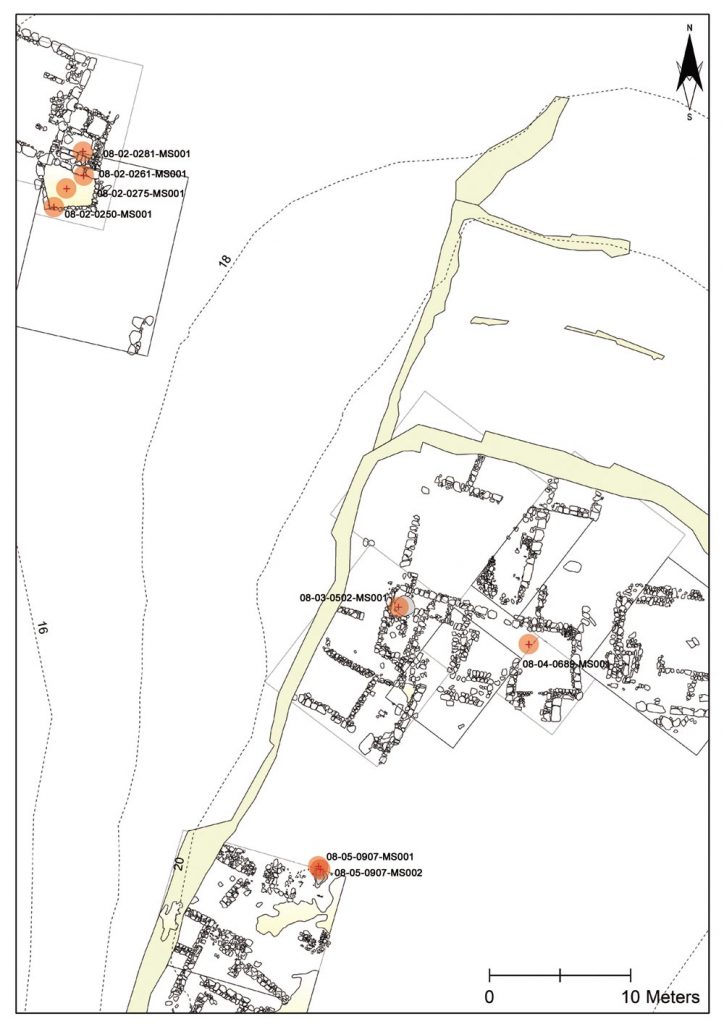As part of the interdisciplinary approach as practiced by the Sissi Archaeological Project, an extensive micromorphological study is carried out on site by Laura Matilde Magno.
Complementary to archaeology, micromorphology is a special branch of pedology that involves the study and the interpretation of soils through the analysis of thin sections under the polarizing light microscope. One of the benefits in using this method is that unlike other traditional geoarchaeological methods, such as grain size analysis or chemical analysis, micromorphology studies undisturbed sediments, soils and anthropogenic materials as intact blocks (Stoops 2003).
The archaeological record is not made only by what we see by our eyes. In the so-called microscopic record, a huge range of space below the submillimetres scale, not visible to the naked eye, a great number of information are hidden and embedded (Weiner 2010).
Micromorphology is one of the most powerful approaches to investigate this gap between macroscopic and microscopic archaeological record since it provides information not only about the components of the sediment, such as the minerals assemblage and micro-artefacts, but also about the spatial relations among these elements. It is fundamental to an understanding of the geogenic, anthropogenic and biogenic processes that contributed to the formation of the sediment (Bullock et al. 1985) and it provides information about the structural disturbances due to human activities, the diagenetic processes that affected the sediment after its deposition and the chronological relationship between these various processes.
In Sissi, the focus of micromorphological research is on the anthropogenic aspects, especially sequences and possible functions of floors and rooms. The samples taken vary in size, albeit not much. They are retrieved on site from a pillar left by the archaeologists. There are different methods and strategies to collect the blocks, the choice depending mostly on the kind of sediment you are working with (soil’s integrity and consistency) and on the questions you want to answer. When sampling, the most important thing to care about so that the sample can be useful, is its integrity: it has to be intact and to preserve its structure, the organisation of the soil and the relations between its components.
Once collected, the samples are transferred to the laboratory where they are dried and embedded in a polymer resin. This process can requires a variable range of time depending on the type of polymer and the catalysing agent used.
The block is than processed through cutting and grinding a slice of the block into a very thin section (25 to 30 micrometres thick). The thin section is than analysed with a petrographic polarizing light microscope. After a quantitative description and preliminary interpretation of its components and structure, the thin sections can be further subjected to microscopic, submicroscopic and chemical analyses in order to address more specific research questions. Micromorphological research contributes empirically verifiable information to the larger interpretational framework.
References
Bullock P., Fedoroff N., Jongerius A., Stoops G., Tursina T. (1985) – Handbook for soil thin section description. Waine Research Publications, Wolverhampton.
Stoops G. (2003) – Guidelines for analysis and description of soil and regolith thin sections. Soil Science Society of America, Madison, WI.
Weiner S., (2010) Microarchaeology: beyond the visible archaeological record. Cambridge University Press.
